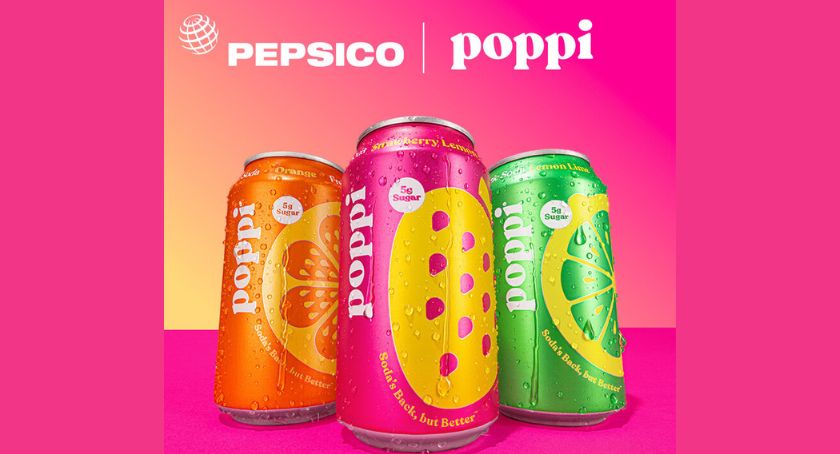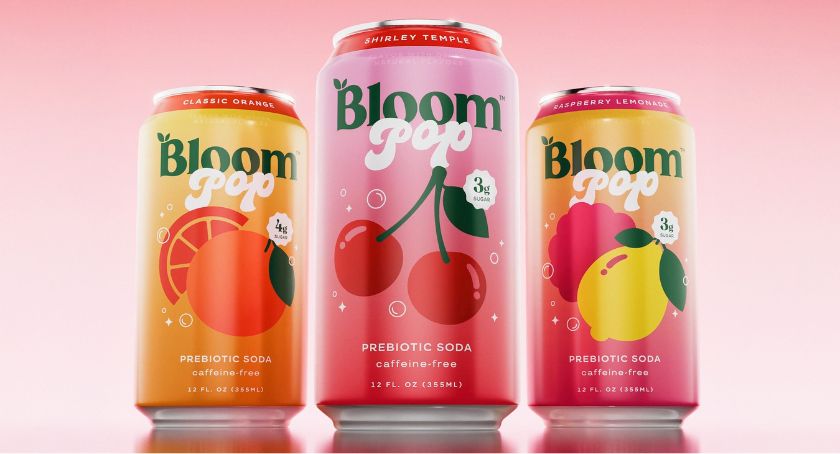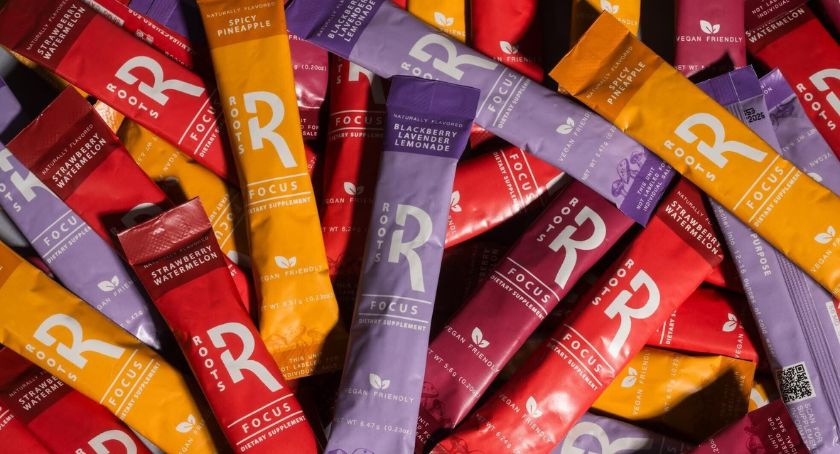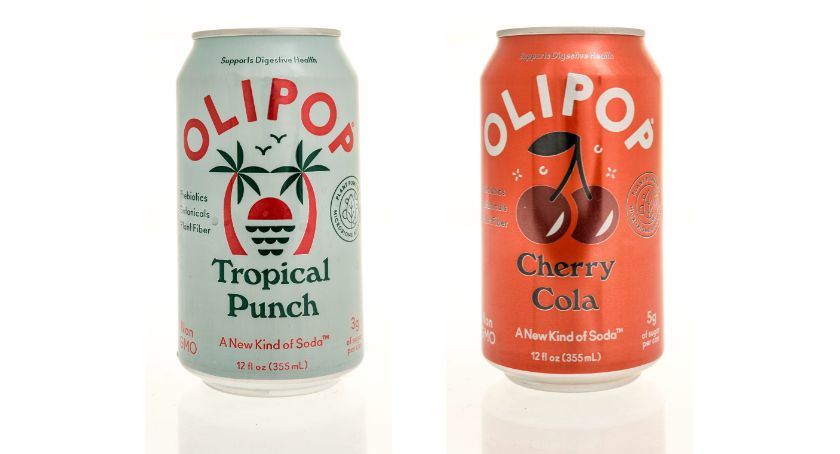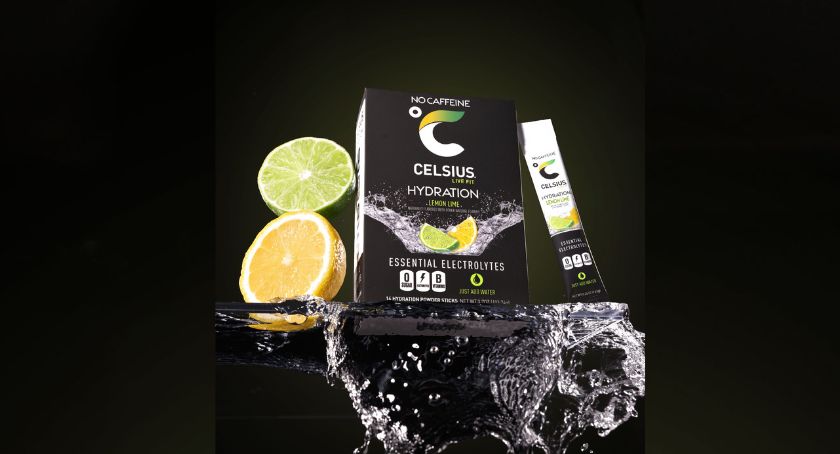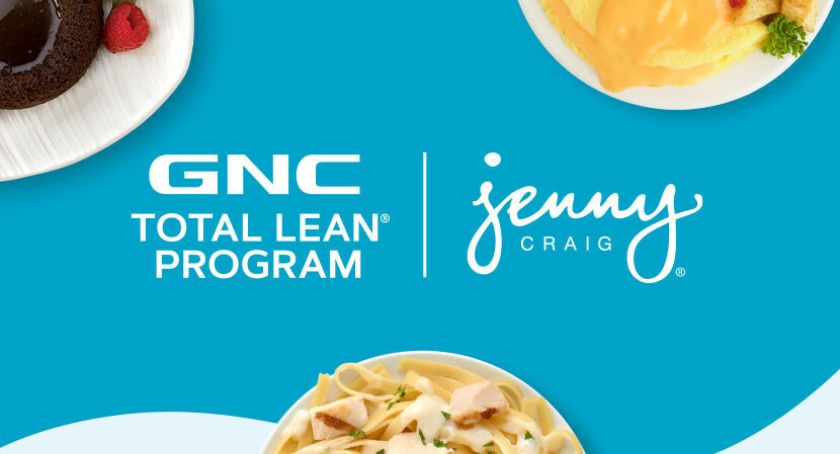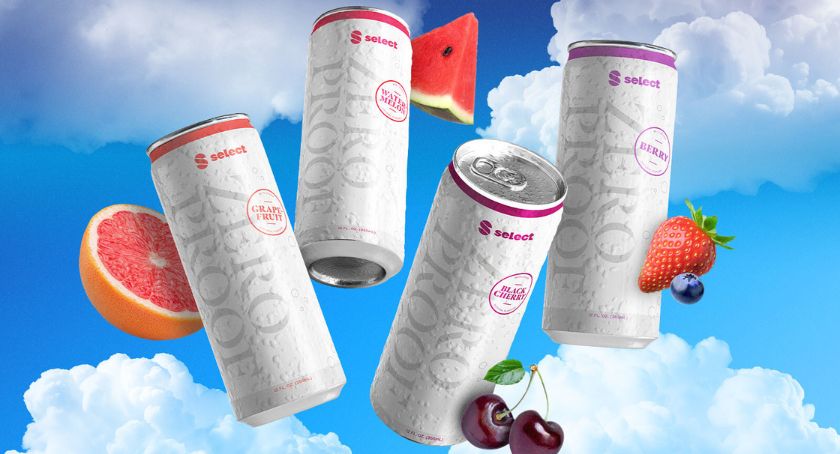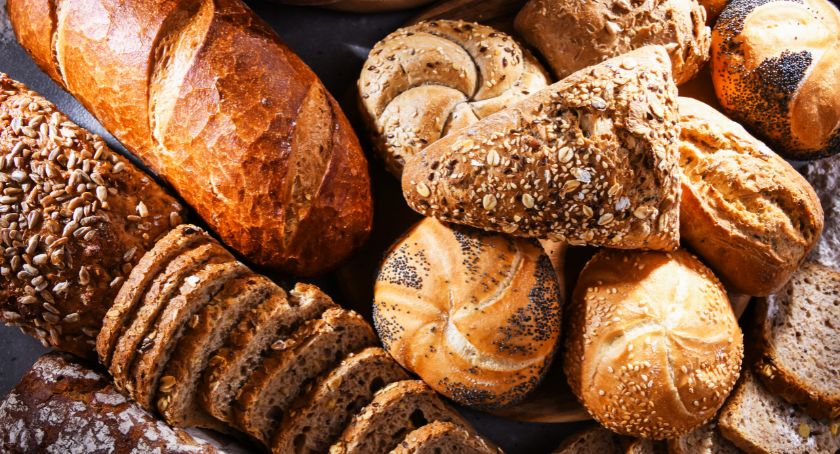Features
Functional Powerhouses: Nutrition Bars Evolve to Meet Today’s Trends
As snacks with functional ingredients outperform other foods, consumers expect to find health benefits from a variety of product options.

By: Mike Montemarano

Ingredient suppliers and food technologists continue to blur the lines between supplements and functional foods, as new ways of protecting sensitive nutritional ingredients enable fortification in plenty of unexpected places.
Today’s nutrition bars and functional snacks are characterized by condition-specific structure-function claims, and often feature branded specialty ingredients, many of which were once only optimal for traditional dietary supplement formats.
“Satiety certainly remains a key factor, as consumers look to solutions that will satisfy their hunger,” said Paula Limena, vice president of global marketing for health and wellness at ADM. “But, at the same time, they also want a tasty treat that can support their evolving health and wellness goals and provide targeted support for gut health, immune function, energy, relaxation, and more.”
According to a 2023 survey by IRI Worldwide, 49% of consumers have three or more snacks per day, mostly led by 25- to 34-year-olds (68%) followed by those aged 35-44 (60%) and 18-24 (58%). A full 50% of consumers say they often eat snacks instead of a meal because they’re on the go, IRI reported.
Better-for-you (BFY) benefits are even sought out in the most conspicuous “junk” foods like chips and cookies, IRI noted, especially when it comes to protein/fiber fortification, functional ingredients like mushrooms, and low/no sugar alternatives.
Nutrition bars are performing well from a dollar and volume sales perspective, which isn’t the case for the segment of snack bars without wellness positionings, noted Courtney LeDrew, senior marketing manager at Cargill.
In the natural channel, a category of products monitored by SPINS that includes wellness bars, energy gels, and energy snacks increased 4% in sales to reach $2.98 billion in 2023, while also growing by 4% to reach $3.43 billion in conventional channel sales.

Flavor Trends
Along with health benefits, flavor is a top priority for consumers.“We’re starting to see more savory flavors like kale, spinach, and cumin hit the market,” LeDrew said. “This suggests it doesn’t always have to be about sweet; bold flavors can gain a foothold, too.”
Jennifer Zhou, senior director of global product marketing for flavors at ADM, said that consumers want flavors in functional snacks that serve as strong cues for the health benefits in products.
“Fermented and pickled flavor profiles are growing and capturing the attention of health-conscious shoppers, especially as consumers recognize the link between gut health and their overall wellbeing,” she said. “We’re seeing functional snacks and bars in the grocery aisle with these unique notes, such as savory, crunchy, umami-forward dill vegetable chips or dark chocolate almond bars made with fermented nuts.”
On a similar note, zingy citrus flavors like blood orange or yuzu are paired with traditional citrus profiles, Zhou added.
Functional ingredient suppliers can best serve their customers through the development of in-house programs to provide modification, masking, and texture solutions for a range of snacks, Limena noted. ADM’s proprietary TasteSpark flavor technology can “help mask off-notes and build back mouthfeel and texture that typically come with products that have added functional ingredients, such as fiber or protein, and reduced sugar content.”

Core Consumers
Market researcher Mintel expects continued reliance on snack, performance, and nutrition bars from core consumers, with 75% of current bar buyers expressing that they would maintain or increase their purchases, according to a 2023 survey.Part of what’s so appealing about nutritious snacks is that they promise a time-efficient form of nutritional insurance that’s less expensive than fresh groceries, Mintel reported. Inflation, hybrid work schedules, and a general sense of burnout were the top reasons they planned to increase spending on functional snacks. Consumers’ health priorities and goals are weighted against financial constraints and general fatigue, so the value and convenience of snacks and bars over meals resonates with a wide audience.
More than ever, consumers are using snacks as meal replacements, LeDrew said. “Our proprietary snack study … found that the number-one benefit consumers seek from nutrition bars is satiety.”
“Because functional bars and snack products are typically associated with better nutrition, they fit perfectly in this ‘snackification’ trend,” she added, “enabling consumers to replace meals with a quick, convenient option they perceive as a healthy choice.”
The U.S. Government Accountability Office (GAO) reported that food prices rose about 11% from 2021 to 2022, and consumers feel the sticker shock at the grocery store.
“Inflation has forced some consumers to rethink their purchasing patterns, and not just in bars and snacks. Many premium food and beverage categories have experienced lower sales than usual, while less expensive standard or private label forms of those products have seen increases in sales,” said Kyle Krause, product manager, functional fibers and carbohydrates, North America, at Beneo.
However, inflation may be softening, and for those who can still afford premium products, innovation must continue, he noted.
“Nielsen has tracked an uptick in private label purchases across the food and beverage landscape, and the nutrition bar and functional snack space is not immune,” said LeDrew. As a result of trading down, name brands are losing some market share to private label products in the functional snack space.
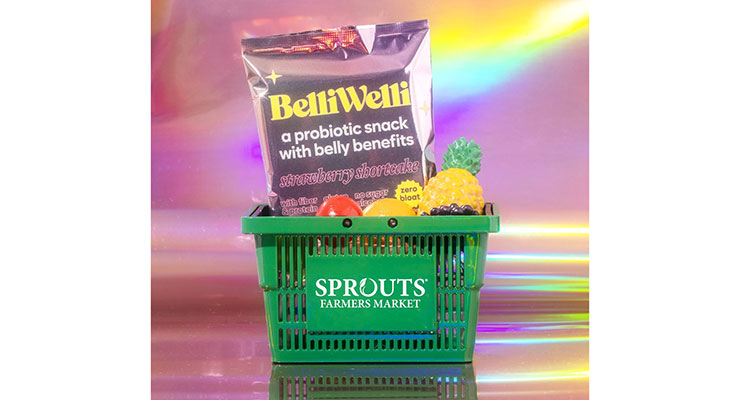
Adding Functionality
Beyond the core benefits like adding vitamins and minerals to a variety of foods, there’s strong appeal in including protein, whole grains, prebiotics, probiotics, energy-enhancers, fiber, calcium, and more in unexpected places, Krause said.“Functional snacks are now expected to contribute to overall wellbeing, offering solutions such as sustained energy, prebiotic and digestive health support, or blood sugar management and fiber enhancement,” Krause said. “This shift reflects a desire for convenient, on-the-go options that align with broader health and wellness goals.”
BelliWelli, a family-owned brand of functional snack bars, has a portfolio of products that are low-FODMAP-certified, gluten-free, have zero sugar alcohols, are packed with protein and fiber, and contain spore-forming probiotics capable of withstanding the baking process.
Rawcology has staked out a position in the rising tide of snacks packed with live probiotics, having launched Granola Snack Bites, which contain 1 billion live cultures of GanedenBC30, a proprietary strain of the spore-forming Bacillus coagulans.
Core Foods also made waves recently with its line of non-GMO, organic, gluten-free oat bars, fortified with inulin, a prebiotic fiber called isomalto-oligosaccharide, and GanedenBC30. These bars also boast a short ingredient list, and notably, all of the sugar content comes from dates, ensuring that all sweetness comes from a relatively low-glycemic source.
Enzymedica, primarily known for its digestive enzymes and supplements, launched its own line of Digest Gold Fiber+ Cookies in blueberry and harvest oat flavors, which are designed to promote regularity, satisfy hunger, reduce stomach bloating, and more. The two key ingredients are a soluble corn fiber and MB40, a proprietary strain of B. subtilis clinically-evidenced to reduce bloat.
Since only spore-forming probiotics can withstand typical food manufacturing conditions, options are limited when it comes to picking out complementary microbes for condition-specific applications. But, already, ADM has begun with an active lifestyle probiotic blend which contains its ES1 (Bifidobacterium longum CECT7347), BPL4 (Lactobacillus casei CECT9104), and BPL15 (Lactobacillus rhamnosus CECT8361) strains. This specific blend of probiotics was tested in a 2021 clinical trial involving an oxidative stress model of exercise in male cyclists, with an array of biomarker changes suggesting its potential in exercise recovery.1
Science is cementing the notion that not all fibers are one and the same, as interest grows in how fiber relates to precision nutrition, weight management, glycemic control, and more.
“One current trend in the market is the growing awareness of GLP-1, which is one of the hunger hormones. On top of that, according to a recent Mintel report, weight-conscious consumers want to incorporate products in their routine targeting satiety effects. That’s where dietary fibers, such as ADM and Matsutani LLC’s Fibersol can show their best attributes,” said Limena.
Across clinical studies spanning 30 years, the corn-derived, low-FODMAP prebiotic Fibersol has been shown to be efficacious in supporting intestinal flora at 3.75 grams daily, Limena noted, by supporting the growth of an array of beneficial microbes.2 At a dosage of 10 grams with a meal, the fiber may stimulate the production of satiety hormones associated with delayed post-meal hunger in adults, according to a 2015 crossover clinical study involving 19 participants.3
In a report that sought out functional nutrition trends on social media, Prinova listed cognitive health as its leading “mega-trend” in foods and beverages in 2024, noting that adaptogens and nootropics are appearing more frequently in everyday foods and beverages, often with branded ingredient logos appearing front-of-pack.
Adaptogens, herbal extracts, and other nutraceutical ingredients commonly used for cognitive and mood support continue to proliferate in the bars and snacks space. But none are rising quite as much as mushrooms. According to Scott Dicker, market insights director at SPINS, over the past year wellness bars and gels containing functional mushrooms shot up by 491% in sales, with other major boosts in cookies and snack bars (368%) and nuts, trail mix, and dried fruit (109%).
Mindright recently launched vegan protein bars, popped chips, and ready-to-mix coffee enhancer powders fortified with a variety of adaptogens and nootropic ingredients. This includes ingredients like Aquamin branded magnesium, CognatIQ whole coffee fruit extract, KSM-66 Ashwagandha, L-Theanine, cordyceps, and ginseng, available in different combinations like the Nootropic Blend and the Happy Brain Blend.
In 2023, Wise Bar debuted a line of vegan, gluten-free bars each packed with 3,000 mg of targeted mushroom blends and adaptogens like ashwagandha at doses that nearly double competing products.

Blood Sugar Management in the Spotlight
Blood sugar management has become a much more prevalent wellness concern. Perhaps it’s overdue given that 96 million U.S. adults (38% of the adult population) have prediabetes, but nearly 80% of prediabetic people are unaware they have it, per the National Center for Chronic Disease Prevention.LeDrew said that, based on Cargill’s research, consumers are mostly avoiding added sugars, and are comfortable with sweetness that has natural connotations. “Naturally sweetened,” “no added sugar,” and “no artificial sweeteners” have some of the highest impacts on consumers’ purchase decisions.
“When consumers see those specific claims on a package, they are more likely to purchase that product,” LeDrew said. “These umbrella sweetener claims are more powerful than specific claims like ‘low glycemic,’ which resonate with a much narrower consumer base.”
ADM’s consumer research revealed that 57% of U.S. adults surveyed claim they’re taking specific actions to manage their blood sugar, and 40% monitor their blood glucose levels outside of routine doctor visits.
“Health and wellness brands crafting functional snacks and bars must consider the ingredients used to help support healthy blood glucose control. For example, there are key differences between glycemic index (GI), glycemic load (GL), and glycemic response (GR),” said Sara Diedrich, global marketing director of sweetening and texturizing solutions at ADM.
“Consumers are particularly attentive to claims and ingredients that contribute to steady or more balanced blood sugar levels,” said Denisse Colindres, manager of nutritional communication, North America at Beneo. This has placed focus on the company’s Orafti line of prebiotic fibers, especially inulin and oligofructose, which stand out due to their ability to modulate glucose response, she noted. Another standout is the company’s low-glycemic carbohydrate Palatinose, a branded, beet-sourced isomaltulose, which was developed to sustain energy release without spiking blood sugar levels.
Colindres noted that suppliers are investing in research to determine potential synergies between branded ingredients, in hopes of enabling standout blood sugar claims on functional foods.
In a clinical trial on 117 subjects who either had a daily test drink containing Palatinose or sucrose, those who took palatinose experienced a lower glycemic impact, plus linkage to a slower and sustained glucose release.4 Meanwhile, in that same population, those who were also treated with the prebiotic Orafti Synergy1 saw an increase in beneficial strains of bifidobacteria and a significant decrease in glycemic variability over time, irrespective of whether they consumed sucrose or Palatinose. The combined benefits of Palatinose and Orafti Synergy1 were shown in the study to support blood glucose management in a synergistic manner, Colindres noted.
ADM recently introduced SweetRight Stevia Edge-M, a Reb M ingredient isolated directly from the stevia leaf. “Stevia Edge-M is not produced via fermentation or bioconversion, further setting it apart from other Reb M options on the market,” said Diedrich. As a result it can be listed as ‘stevia leaf extract’ on product labels, helping meet consumers’ clean label desires.”
Diedrich noted that complex sugars with higher sweetening potencies than sucrose can be used to reduce a product’s glycemic content.
“We recently launched our SweetRight agave,” she said. “With sweetening potency 25-30% higher than sucrose, less input of SweetRight agave is required to achieve the same sweetness level, supporting sugar reduction targets.”
Diedrich also noted the food industry has been using fibers to make up for lost textural qualities when reducing sugar. “Not only has Fibersol been shown to help minimize blood sugar spikes after meals in individuals with normal blood sugar levels, but it has also been shown to support reduced-sugar and low-calorie applications. Fibersol helps build back integrity through structural and binding qualities that can be lost when reducing sugar in formulations.”5
Sustainable Shoppers Double Down on Validation
When brands make statements and promises related to environmental and social impact, consumers want to see straightforward proof and third-party validation.A study published in 2023 by NielsenIQ and McKinsey found that consumers largely think of environmentally-friendly packaging as “table stakes.” While environmental, social, and governance (ESG)-related claims saw disproportionately high sales growth over a recent 5-year period, there’s a palpable degree of consumer confusion due to so many competing claims.
In a recent report by Euromonitor, “Top Global Consumer Trends 2024,” the market research firm listed “Greenwashed Out” as its third-leading consumer trend set to impact the food market in 2024. More than 60% of consumers told Euromonitor that they’ve tried to have a positive impact on the environment in 2023, but they realize the limitations of what they can do as individuals, and are increasingly skeptical of sustainability marketing.
Euromonitor reported that 45% of professionals said their company plans to invest in certifications to avoid greenwashing in the next 5 years. “Be forthright and factual—back up claims with tangible proof and help your customers understand their impact,” the firm suggested.
According to LeDrew, taste, price, and nutrition still outweigh sustainability as a purchase driver, and Cargill’s research indicates that more generalized sustainability statements had a bigger draw. “Consumers rated broader statements such as ‘responsibly produced’ or ‘sustainably sourced’ as more impactful than specific sustainability related claims like ‘upcycled.’”
“Across the board, manufacturers can appeal to label-conscious consumers by using familiar, recognizable ingredients. Many times consumers perceive familiar ingredients as more ‘natural’ even though the term has no official definition,” LeDrew said.
“As quick bites with added ingredients are on the rise in the functional snacking space,” she added, “consumers are also scrutinizing product labels for ingredients they recognize and deem as ‘closer to nature.’ Botanical extracts can support these desires while also elevating functional snacks or bars.”
Leading brands hope that the regenerative agriculture movement may one day follow the path of organic, both in terms of popularity and having a national certification program.
However, this movement is still in its infancy. According to Wolf Tree Ventures, which builds and incubates companies focused on transitioning agricultural supply chains to regenerative agriculture, just 63 CPG brands that exhibited at Expo West 2023 publicly supported regenerative agriculture, which represented about 2% of total exhibitors.
Regenerative Organic Certification has been developed to create a uniform set of standards that some hope will eventually lead to federal recognition like the USDA Organic Program.
Wolf Tree Ventures reported many challenges for early adopters, like a severely limited supply of ingredients, lack of rigorous transparency programs, and lack of widespread recognition. Vertically-integrated brands appear to be faring well so far in the regenerative space compared to others.
References
1. Maravillas, S. et al. (2021). Antioxidant Effect of a Probiotic Product on a Model of Oxidative Stress Induced by High-Intensity and Duration Physical Exercise. 10(2):323. doi: 10.3390/antiox100203232. Mai, V. et al. (2022). Resistant Maltodextrin Consumption in a Double-Blind, Randomized, Crossover Clinical Trial Induces Specific Changes in Potentially Beneficial Gut Bacteria. Nutrients. 14(11), 2192. https://doi.org/10.3390/nu14112192
3. Zhong, Y. et al. (2015). Soluble dietary fiber (Fibersol-2) decreased hunger and increased satiety hormones in humans when ingested with a meal. Journal of Nutrition Research. 35(5):393-400. doi: 10.1016/j.nutres.2015.03.004
4. Kordowski, A. et al. (2022). Palatinose (Isomaltulose) and Prebiotic Inulin-Type Fructans Have Beneficial Effects on Glycemic Response and Gut Microbiota Composition in Healthy Volunteers—A Real-Life, Retrospective Study of a Cohort That Participated in a Digital Nutrition Program. Frontiers in Nutrition. https://doi.org/10.3389/fnut.2022.829933
5. Livesey, G. et al. (2009). Interventions to lower the glycemic response to carbohydrate foods with a low-viscosity fiber (resistant maltodextrin): meta-analysis of randomized controlled trials. American Journal of Clinical Nutrition. 89(1):114-25. doi: 10.3945/ajcn.2008.26842



